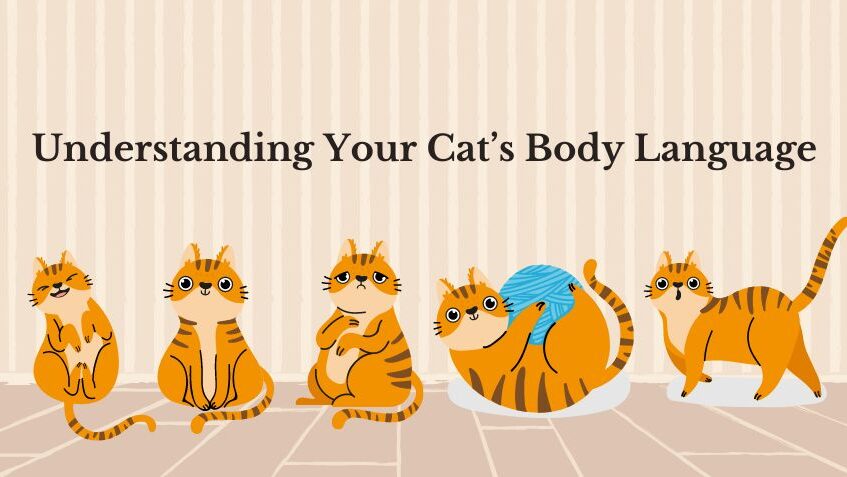Understanding Your Cat’s Body Language
Cats communicate a lot through body language. Understanding their gestures and postures can help you interpret their feelings and needs. Here are some key elements of cat body language:
Tail Position:
- Straight Up: A cat with its tail held high is usually feeling confident and content.
- Puffed Up: A puffed-up tail is a sign of fear or agitation. The cat is trying to appear larger to intimidate a potential threat.
Tail Movement:
- Slow Swish: A slow, gentle swishing tail usually indicates that the cat is focused or slightly irritated.
- Rapid Swish: A rapidly swishing tail can be a sign of agitation or annoyance. Approach with caution.
- Tail Arched Back: When a cat arches its back and raises its tail, it’s often feeling threatened or defensive. This posture is commonly seen during confrontations with other animals.
Ears:
- Forward: Ears facing forward indicate that a cat is relaxed, interested, or content.
- Backward: Ears flattened backward suggest fear, aggression, or irritation.
- Purring: Purring can indicate contentment, but cats also purr when they’re in pain or anxious. Consider the context to understand its meaning.
Whiskers:
- Forward: Whiskers pointing forward mean the cat is relaxed or interested.
- Backward or Flattened: Whiskers pulled back against the face often indicate fear or discomfort.
Eye Contact:
- Slow Blinking: Slowly blinking at a cat can be a sign of trust and affection. If the cat blinks back, it’s acknowledging your friendship.
- Staring: Direct, unblinking eye contact can be seen as a challenge or threat by some cats. Avoid staring if the cat seems uncomfortable.
Body Posture:
- Relaxed: A cat lying on its side or back with its paws tucked under is typically comfortable and content.
- Tense or Crouched: A tense, crouched posture can indicate fear or readiness to pounce.
Hissing and Growling: These vocalizations are clear signs of a cat feeling threatened or aggressive. Give the cat space when you hear these sounds.
Grooming: Cats groom themselves for cleanliness but also as a self-soothing behavior. Excessive grooming can indicate stress or discomfort.
Kneading: When a cat kneads with its paws, it’s often a sign of contentment and comfort. This behavior is reminiscent of kittenhood when they kneaded their mother’s belly for milk.
Scratching: Scratching is a normal behavior for cats. They do it to mark territory and keep their claws healthy. Provide scratching posts to redirect this behavior from your furniture.
Biting or Nipping: Cats may bite or nip when they’re overstimulated during play. If it becomes aggressive, it’s a sign to stop playing.
Tail Between Legs: A cat with its tail tucked between its legs is feeling scared or submissive.
Elevated Hackles: When the fur along a cat’s back is raised (hackles), it usually means the cat feels threatened or agitated.
Remember, every cat is unique, so it’s crucial to observe your cat’s specific body language patterns to understand them better. Over time, you’ll become more attuned to your cat’s emotions and needs, strengthening your bond with your feline friend.
You may also visit – https://www.facebook.com/angkopparasahayop





